What Was Inti Raymi And Why Was It Celebrated By Inca?
Conny Waters - AncientPages.com - Inti Raymi is Inca’s Sun Festival, traditionally celebrated at Cuzco on June 24, which marks the winter solstice, the shortest day of the year - the Inca New Year (in regions south of the equator, the Gregorian months, June and July are winter months.)
Inti Raymi (Festival of the Sun) at Sacsayhuaman,Cusco. Image credit: Cyntia Motta - CC BY-SA 3.0
It is an ancient Inca religious celebration of "The Inti or Sun." Formerly, the Inti Raymi lasted about 15 days, and the last one —carried out in the presence of the Inca Emperor—was in 1535, one year before ¨The Spanish Conquest¨ in 1536.
Today, it is a theatrical representation. Thousands of Cuzco and people from all over the world come together to this event, one of the most important cultural and traditional manifestations in this part of the world.
According to this ancient tradition, the Inca honored the beginning of the new solar year, a time when the Sun comes back to provide warmth for all life. It is the rebirth of the Sun, the Inca royalty, and the mythical origin of the Inca people.
Inti Raymi comes from the Quechua language: inti means “sun” and raymi means “festival.”
During the Inca Empire, only Inca males were allowed to participate in the festival. During the festival, offerings were made to the Sun, Viracocha, and the thunder god. The participants made many wooden statues dressed in fine clothes; at the end of the festival, the statues were burned.
The rituals associated with Inti Raymi are still performed and occur in front of huge crowds on this particular day each June at Cuzco, Peru.
The ancient fortress-ruins of Sacsayhuaman, in the hills overlooking the city, are filled that day with a very special atmosphere of Andean music, dance, a simulation of animal sacrifice (which originally served as an offering to the Sun God), parades, and ceremonies in the ancient Quechua tongue.
The lead figure is "The Inca" - the Emperor, supreme ruler of the Incan Empire. Carried on a platform and dressed in regal red and gold, the Emperor leads the ceremony with gestures and incantations to the Sun. During the festival, 500 actors representing Inca nobility are dressed in traditional clothes adorned with silver and gold. One actor portraying the Sapa Inca blesses the ceremony and speaks in the native language, Quechua, to honor the Sun.
According to Spanish chronicler, soldier, and poet Garcilaso de la Vega, the festival Inti Raymi was created by the ninth Sapa Inca Pachacuti in 1412 and lasted for nine days.
The last Inti Raymi with the Inca Emperor's presence was carried out in 1535, after which the Spanish and Catholic priests banned it for many years at least.
Little is known about the details of the Inti Raymi celebration, and most of what we see today is pieced together from archaeological findings, memories, and practices passed on from one generation to another to keep the ancient traditions alive.
As Quechua is not a written language, there are no written records of the rituals' origins. Among South American greatest celebrations, Inti Raymi is the second only to the festival in Rio de Janeiro.
Updated on June 1, 2024
Written by Conny Waters - AncientPages.com Staff Writer
Copyright © AncientPages.com All rights reserved. This material may not be published, broadcast, rewritten or redistributed in whole or part without the express written permission of AncientPages.com
Expand for referencesMore From Ancient Pages
-
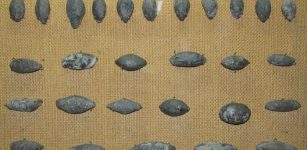 On This Day In History: Battle Of Lugdunum Was Fought – On Feb 19, 197
News | Feb 19, 2017
On This Day In History: Battle Of Lugdunum Was Fought – On Feb 19, 197
News | Feb 19, 2017 -
 Louhi – Witch Goddess Of The North And The Magical Artifact Sampo In Finnish Mythology
Featured Stories | Sep 21, 2017
Louhi – Witch Goddess Of The North And The Magical Artifact Sampo In Finnish Mythology
Featured Stories | Sep 21, 2017 -
 Archaeologists Have Discovered A Mummy Wrapped In Gold – Here’s What It Tells Us About Ancient Egyptian Beliefs
Featured Stories | Feb 7, 2023
Archaeologists Have Discovered A Mummy Wrapped In Gold – Here’s What It Tells Us About Ancient Egyptian Beliefs
Featured Stories | Feb 7, 2023 -
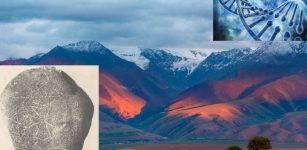 Ancient DNA And Tombstones Lead Scientists To Black Death’s Source Strain
Archaeology | Jun 15, 2022
Ancient DNA And Tombstones Lead Scientists To Black Death’s Source Strain
Archaeology | Jun 15, 2022 -
 Bronze Age Long-Distance Connections: Baltic Amber In Aššur
Archaeology | May 17, 2023
Bronze Age Long-Distance Connections: Baltic Amber In Aššur
Archaeology | May 17, 2023 -
 Ancient Burial Site At Vulci Reveals Treasure Of Coins Dated To 3rd Century B.C
Archaeology | Jul 12, 2018
Ancient Burial Site At Vulci Reveals Treasure Of Coins Dated To 3rd Century B.C
Archaeology | Jul 12, 2018 -
 Horses In Florida Did Not Travel Far Distances – New Study Suggests
Archaeology | Jan 3, 2019
Horses In Florida Did Not Travel Far Distances – New Study Suggests
Archaeology | Jan 3, 2019 -
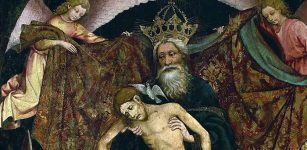 Looted ‘Pietas Domini’ Gothic Altar Dated To 1435 AD Returns From Germany To Poland
Archaeology | Mar 22, 2020
Looted ‘Pietas Domini’ Gothic Altar Dated To 1435 AD Returns From Germany To Poland
Archaeology | Mar 22, 2020 -
 Merovingian Dynasty Of Long Haired Kings
Featured Stories | Jan 18, 2019
Merovingian Dynasty Of Long Haired Kings
Featured Stories | Jan 18, 2019 -
 Spectacular Anglo-Saxon Burial Uncovered – Here’s What It Tells Us About Women In Seventh-Century England
Featured Stories | Dec 17, 2022
Spectacular Anglo-Saxon Burial Uncovered – Here’s What It Tells Us About Women In Seventh-Century England
Featured Stories | Dec 17, 2022 -
 Gold Dated To Scythian-Saka Era Unearthed In Valley Of The Kings In East Kazakhstan
Archaeology | Sep 14, 2020
Gold Dated To Scythian-Saka Era Unearthed In Valley Of The Kings In East Kazakhstan
Archaeology | Sep 14, 2020 -
 Rare Bronze Hand Found At Roman Vindolanda
Archaeology | Jul 11, 2023
Rare Bronze Hand Found At Roman Vindolanda
Archaeology | Jul 11, 2023 -
 Wolstenholme Towne: Lost Virginia Settlement – Destroyed, Abandoned And Forgotten
Featured Stories | Jun 26, 2018
Wolstenholme Towne: Lost Virginia Settlement – Destroyed, Abandoned And Forgotten
Featured Stories | Jun 26, 2018 -
 Earliest Evidence Of Wine Consumption In The Americas Found In Caribbean
Archaeology | May 23, 2023
Earliest Evidence Of Wine Consumption In The Americas Found In Caribbean
Archaeology | May 23, 2023 -
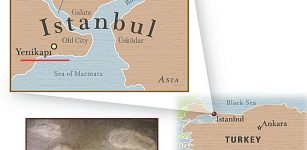 Yenikapı Excavations Reveal 8,500-Year-Old Artifacts
Archaeology | Jan 10, 2016
Yenikapı Excavations Reveal 8,500-Year-Old Artifacts
Archaeology | Jan 10, 2016 -
 ‘Exceptional’ Ancient Roman Bath Complex Discovered In Mérida, Spain
Archaeology | Aug 21, 2023
‘Exceptional’ Ancient Roman Bath Complex Discovered In Mérida, Spain
Archaeology | Aug 21, 2023 -
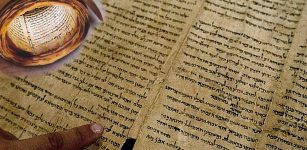 16 Dead Sea Scrolls Fragments Are Forgeries – U.S. Bible Museum Says
Artifacts | Mar 15, 2020
16 Dead Sea Scrolls Fragments Are Forgeries – U.S. Bible Museum Says
Artifacts | Mar 15, 2020 -
 Ruins Of A Roman-Era Bath And A Floor Mosaic Discovered In Central Anatolia
Archaeology | Dec 28, 2015
Ruins Of A Roman-Era Bath And A Floor Mosaic Discovered In Central Anatolia
Archaeology | Dec 28, 2015 -
 Ancient Mystery Of America’s Missing Metal – Can The Answer Be Found In Ancient Europe?
Civilizations | May 18, 2018
Ancient Mystery Of America’s Missing Metal – Can The Answer Be Found In Ancient Europe?
Civilizations | May 18, 2018 -
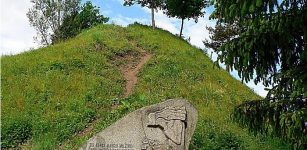 On This Day In History: 4000 Defenders Of Pilėnai Commit Mass Suicide When Attacked By Teutonic Knights – On Feb 25, 1336
News | Feb 25, 2017
On This Day In History: 4000 Defenders Of Pilėnai Commit Mass Suicide When Attacked By Teutonic Knights – On Feb 25, 1336
News | Feb 25, 2017

